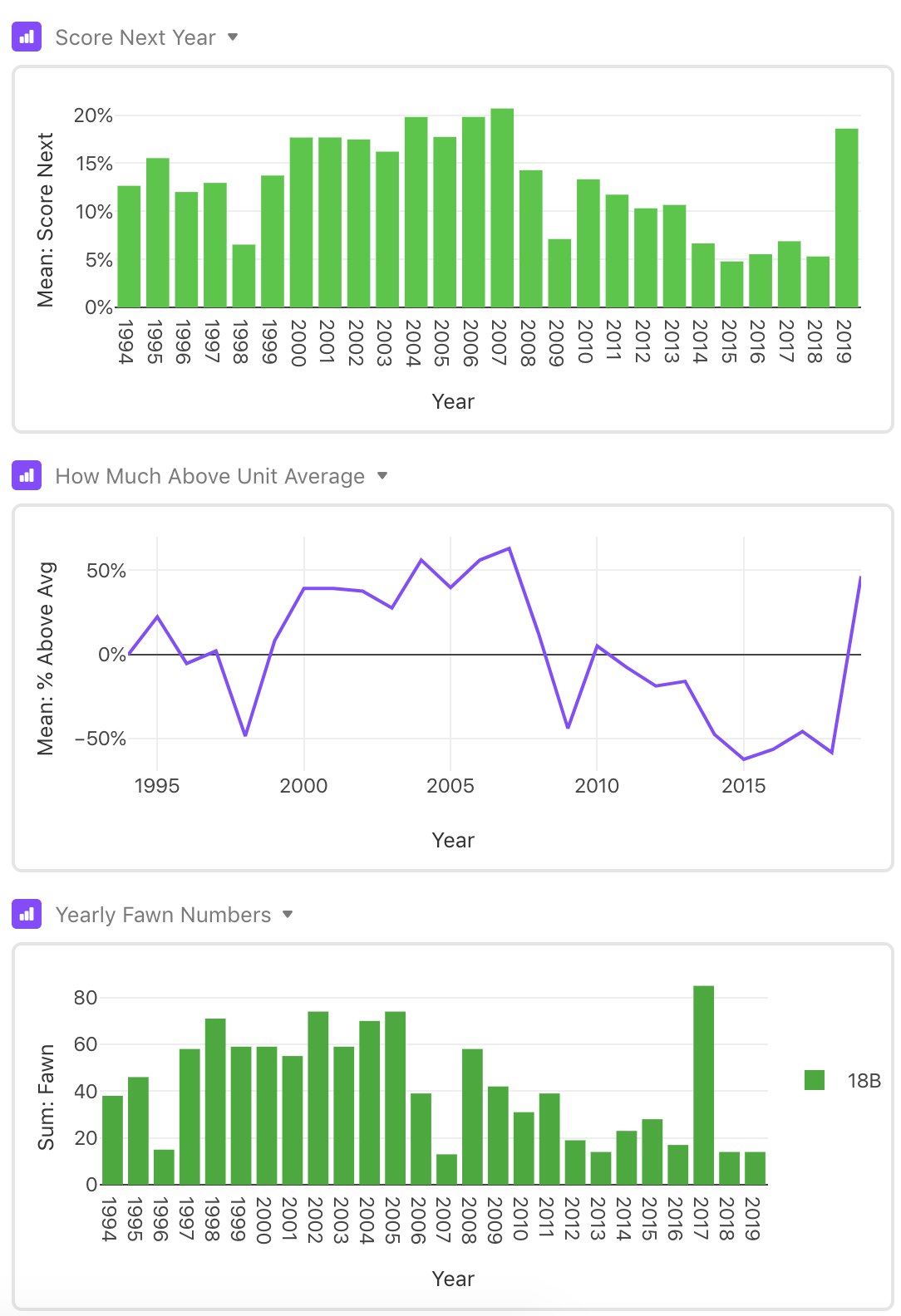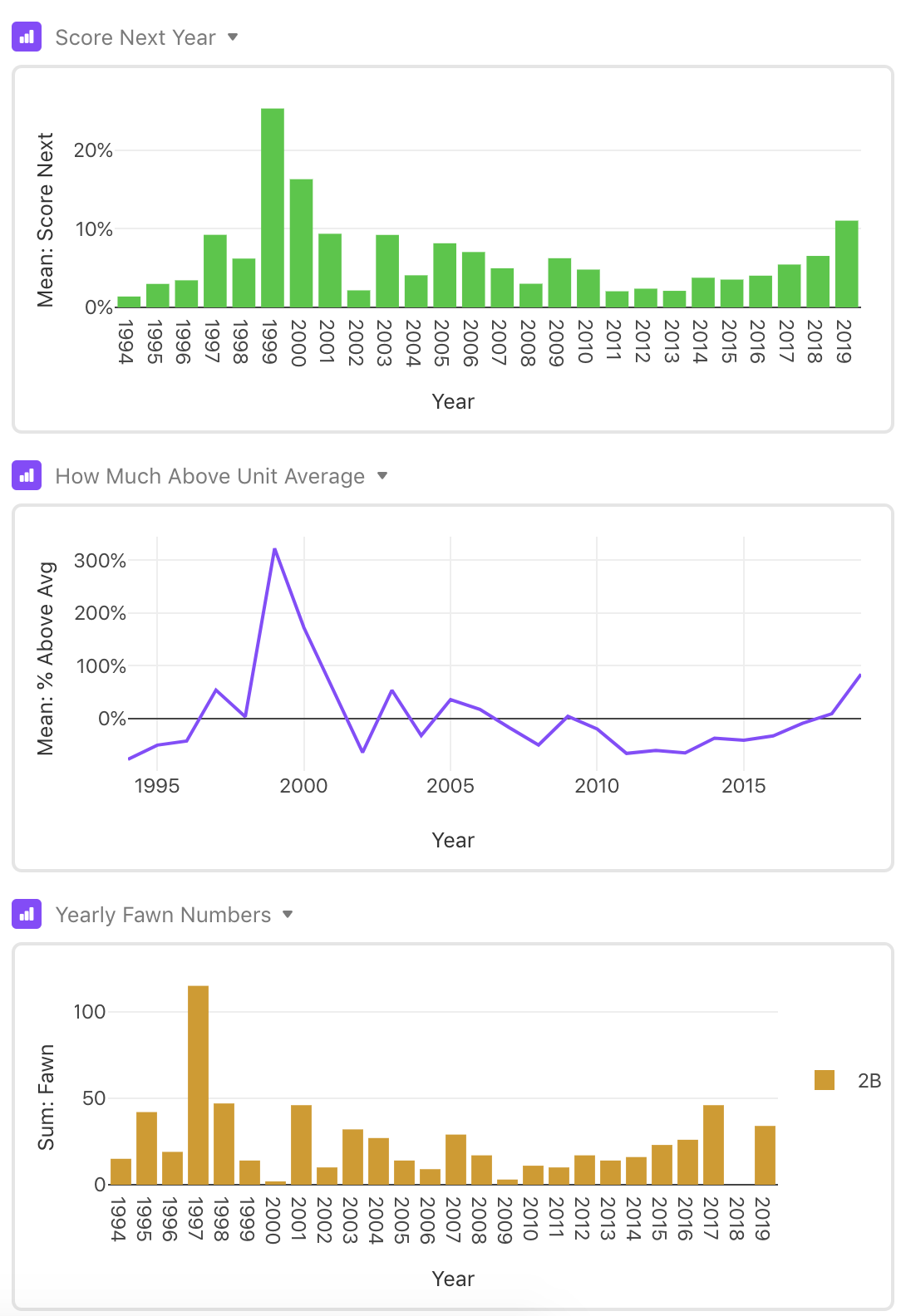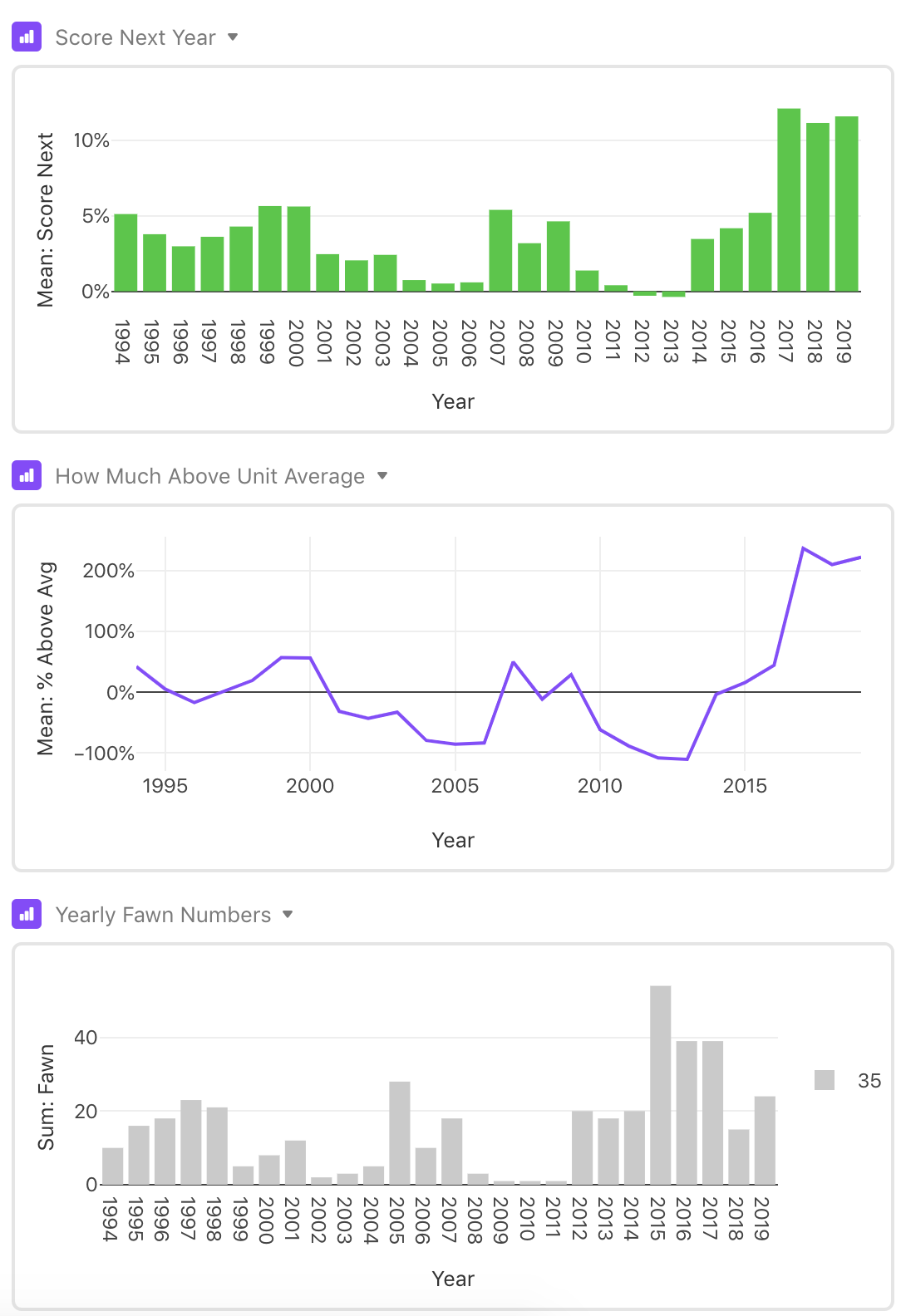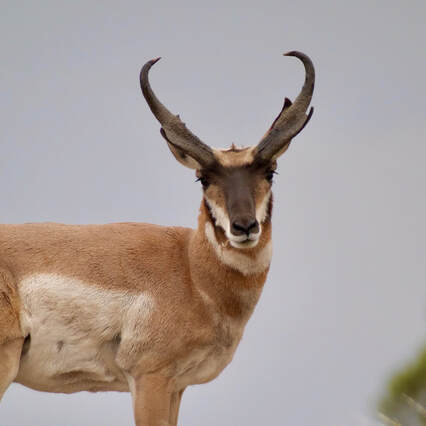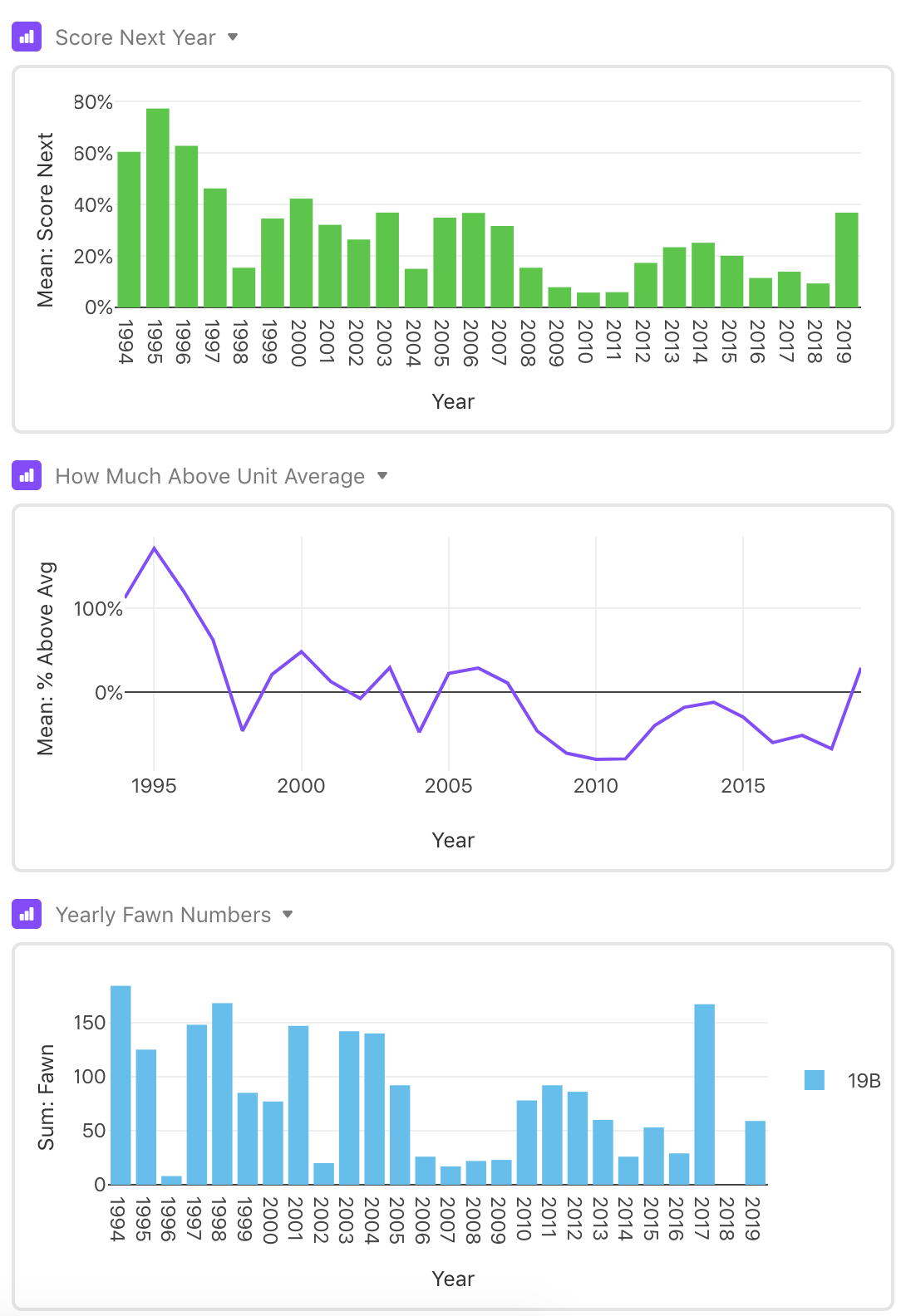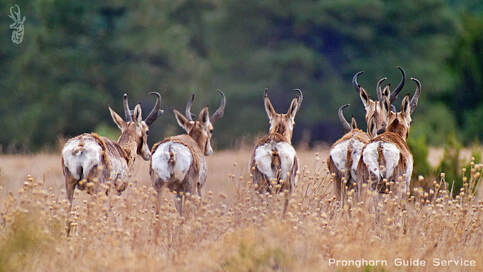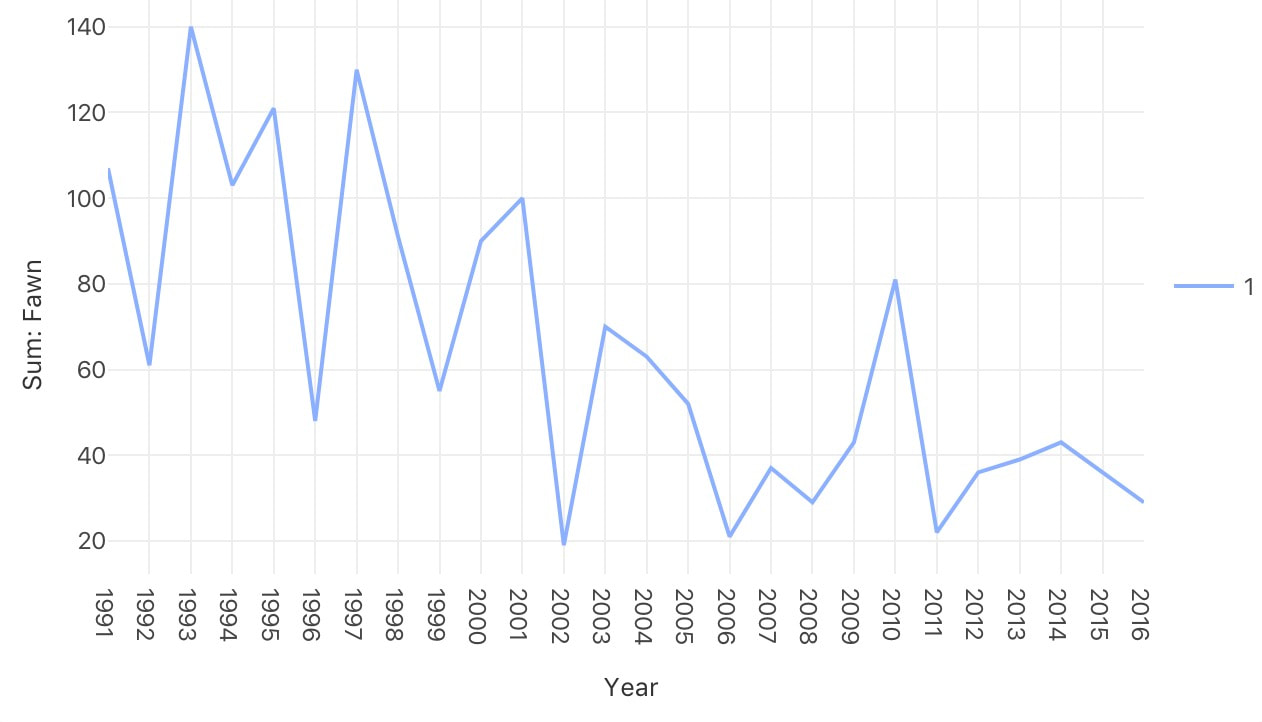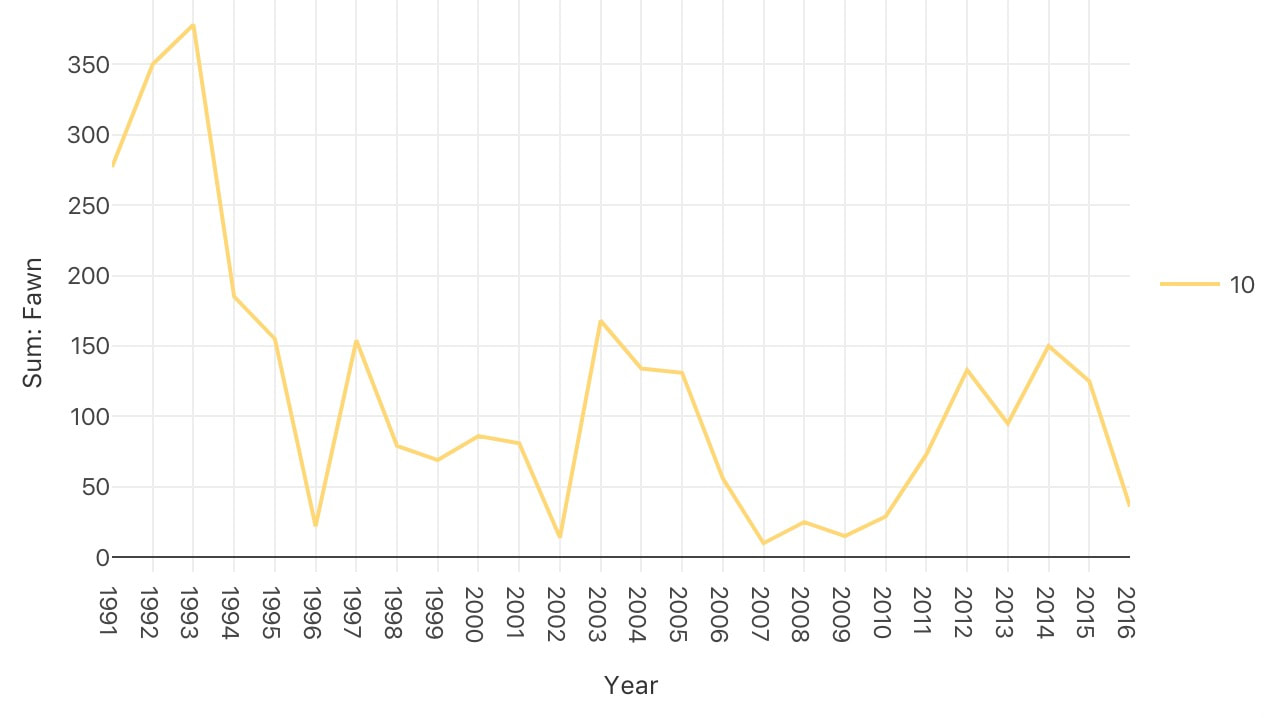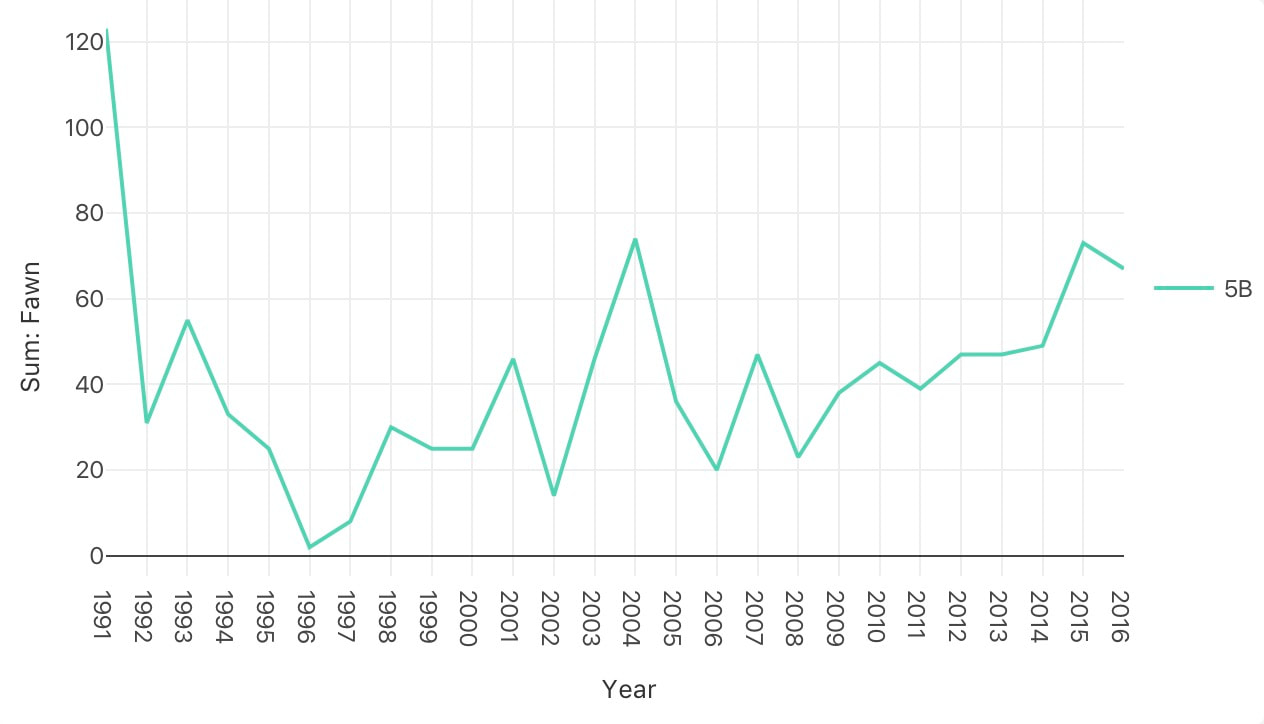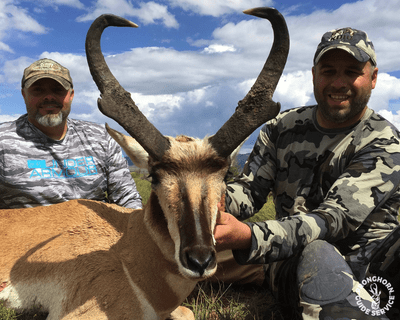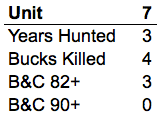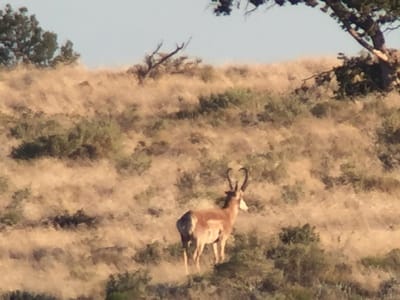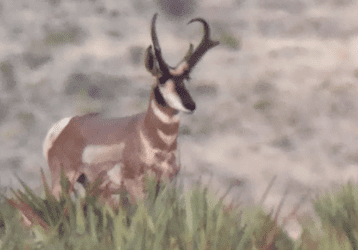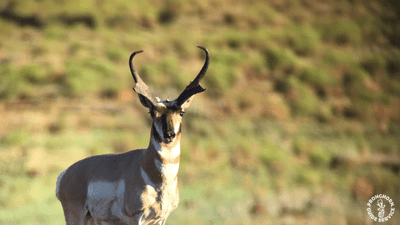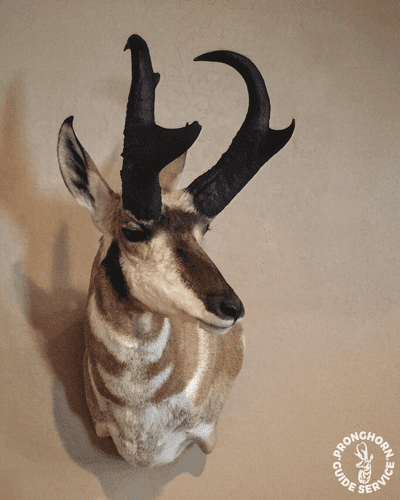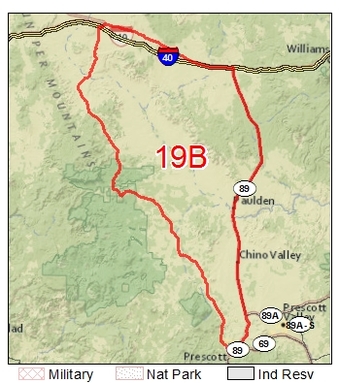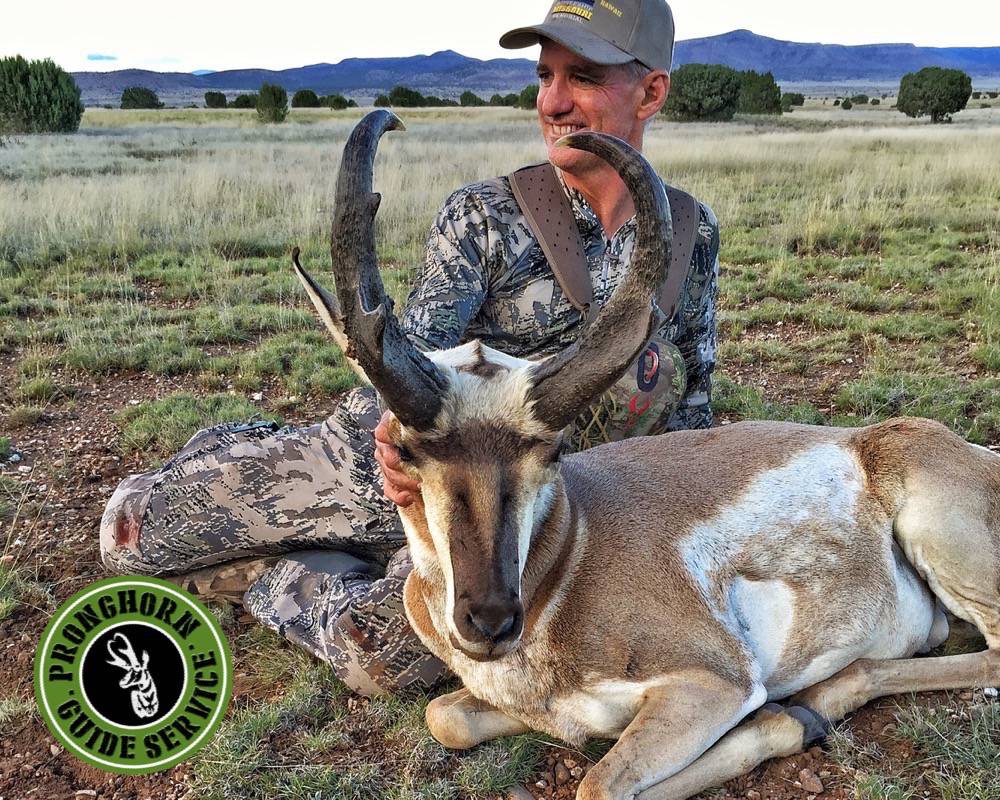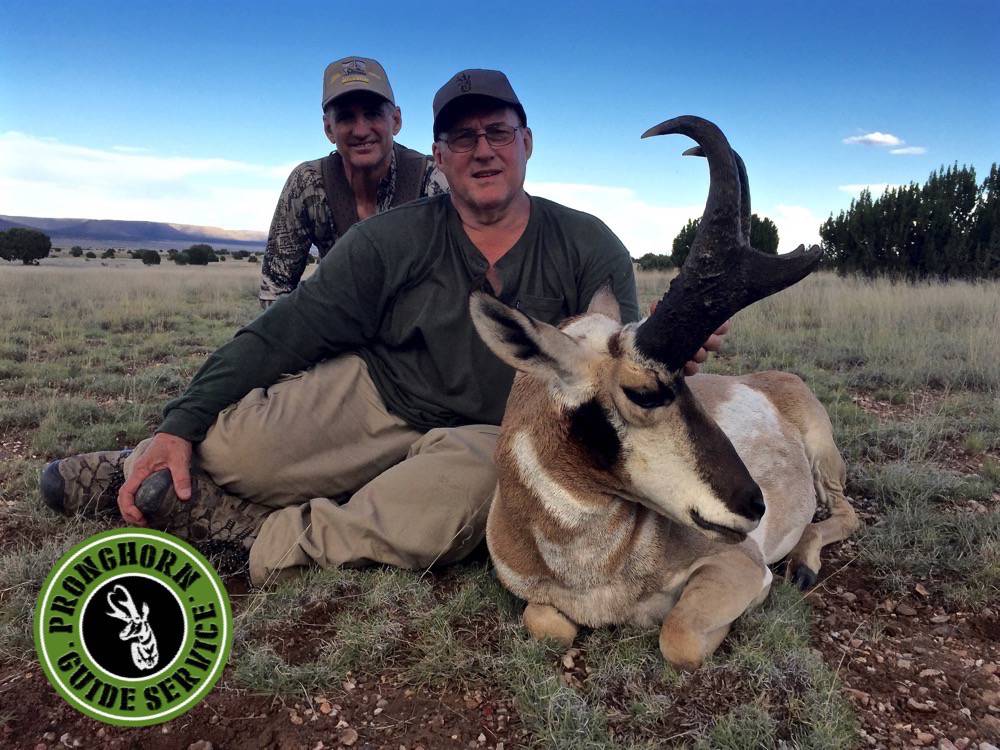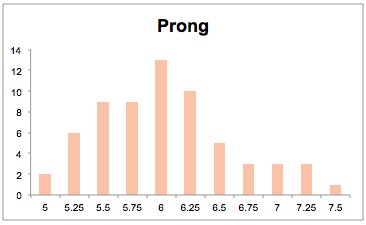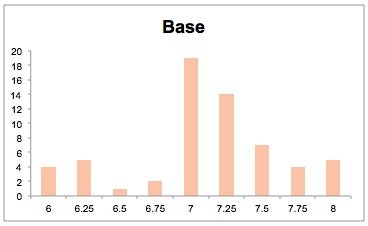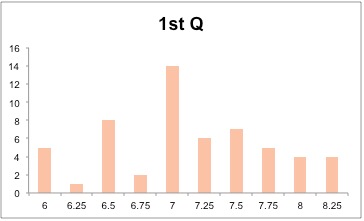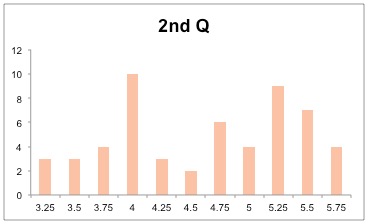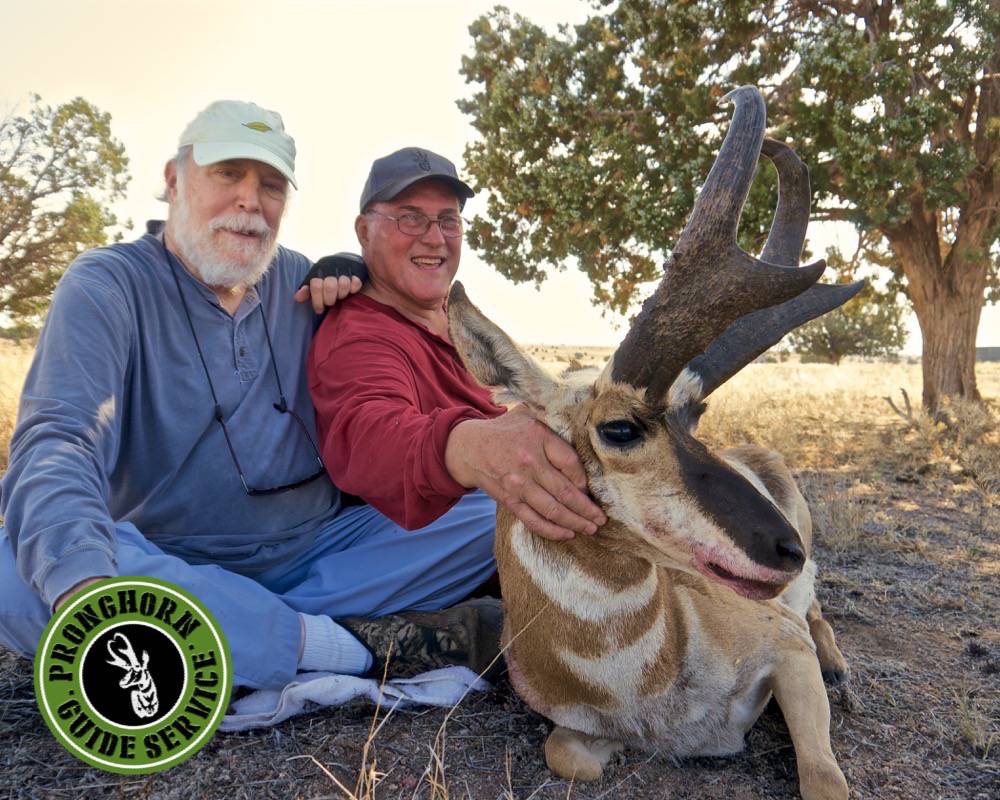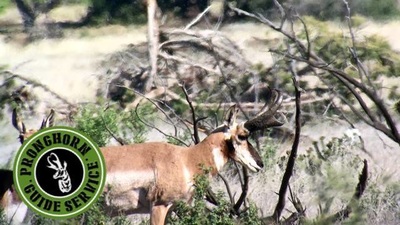|
Arizona had a down year in 2019. 2020 might be tough again in most units. I'm looking forward to bucking the odds and finding some giants. I'm not going to lie - there are some weird units on my list this year 🤷♂ so proceed with extreme caution.
Arizona GMU 1
6: Arizona GMU 5A
5: Arizona GMU 4A
4: Arizona GMU 18A
3: Arizona GMU 10
2: Arizona GMU 19B
1: Arizona GMU 5B
A quick review of the 5 bucks currently posted for field judging. Hopefully if any of you were way off this post will help correct some of those errors and make you better in the field. Don't read this if you haven't entered your guesses. Do that HERE now. BUCK 1 For Buck 1 the average results were really good. L 15 2/8 P 5 6/8 B 6 5/8 1 6 5/8 2 4 1/8 3 2 7/8 82 4/8 This result was really close to what I originally guessed. I have 2 comments for this quiz: 1. Several people listed a 6" or bigger 2nd quarter measurement. Maybe they forgot that this is the measurement that goes above the prong. The 2nd quarter is the same as the D3 on the B&C scoresheet. A 6" measurement for the 2nd quarter would be among the largest ever. 2. Several people listed 3.5" - 4" prong measurements. Maybe this was because they were only guessing the length of the prong that protrudes off the main horn. Remember that the total prong length wraps around to the center of the back of the horn. This usually adds about 2" to 2.5" to the length. If a prong was only 3.5" - 4" it would extend off the horn less than the width of the eye. This buck's prong is probably about 3.5" off the main horn. If we add 2" for the measurement that wraps around to the back of the horn then the prong would be 5.5". BUCK 2 For Buck 2 the crowd was also pretty close on the overall guess. The individual measurements were close as well. L 16 4/8 P 7 1/8 B 6 7/8 1 7 1/8 2 4 1/8 3 2 7/8 89 2/8 The crowd was a little short on the length and a little high on the base. Other than that the numbers were very good! The same error occurred with the 2nd quarter measurement with several guesses over 6". This time there were a few really large base measurements and 1st quarters also. Some as high as 9" and 10". For future scoring reference - the largest bases and 1st quarters are usually in the 8" range. Even 8" is reserved for only the biggest of the big! BUCK 3 Buck 3 the overall guesses were on the low side. L 16 5/8 P 6 B 6 7/8 1 7 1/8 2 4 5/8 3 3 3/8 89 2/8 The biggest miss here was the length. I'm not sure why that is, but maybe it was because of the poor quality video. It was taken about 20 years ago when "HD" didn't exist! Haha. BUCK 4 Buck 4 was a success with the crowd achieving a very good score. The only big difference between my guess and the crowds was with the length measurement. L 15 P 7 1/8 B 6 1/8 1 6 2/8 2 3 5/8 3 2 4/8 81 2/8 I guessed the length much shorter. Perhaps it's because I'm assuming the buck is a 2 year old and thus has a very small head and body. Or maybe I'm wrong and the true length is somewhere between the crowds guess and my own. BUCK 5 Buck 5 was probably the farthest off from the actual score. L 16 6/8 P 6 2/8 B 6 7/8 1 7 2 4 1/8 3 3 88 I'm guessing this is just a small sample size error since this quiz has the fewest entries so far. I'll post more field judging quizzes as this year progresses and we find new bucks to film. In order: Unit 10 The last two years have been amazing in this unit and 2017 and 2018 both look to keep the streak going! I tracked down 35 different bucks taken in this unit in 2016 and 24 of those 35 were over 80. We guided to three of the biggest bucks in Unit 10 on opening morning and all three scored over 90 SCI. Austin Brishky's buck was the biggest in Arizona this year scoring 93 B&C. The Boquillas makes up most of the best country and access is always changing. Keep your ears open. Also, because of the premier nature of these tags and the lengthy wait to draw them, this hunt can be very competitive if you're after the best trophy bucks. If you'd rather not compete for the best bucks then apply elsewhere. Interesting fact: Unit 10 has been in the Top 7 every year for the past 16 years except 2012 and 2013. Unit 19A We didn't have much luck scouting 19A in 2016, but a 90 was taken during one of the hunts. This unit is always a top unit, even in it's down years. Private access remains an issue. If you apply here contact as many landowners as possible as soon as you know you drew a tag. Interesting fact: My new ranking method has 19A ranked either 1st or 2nd every year for the past 16 years. Unit 7 I heard rumors of giant bucks in this unit but never located any of them. I'm sure they're alive since this unit has plenty of hiding spots. Unit 7 hasn't produced many bucks over 90, but I think they're there, just hidden away. Interesting fact: A large part of antelope country in the north east is off limits until 2019. Unit 4A Last year was great in this unit. I know of several 80+ bucks taken. The herd is growing and I expect it to produce several more great bucks in 2017. Interesting fact: Michael O'Haco killed the former B&C World's Record in 4A in 1985. He also owns the best antelope hunting ranch in 4A. Unit 19B 19B is a great unit plagued by private land issues. We guided Mike Heller in 19B this year and killed a giant 87 3/8 SCI buck. We found many great bucks in 2016. Maybe a few made it through the year. Interesting fact: Two of the three auction tag bucks came from 19B in 2015. Unit 8 Many trees and few flats. I don't like this unit, but I know hunters who love it. Interesting fact: Jeff Erickson killed a 96 1/8 SCI buck in Unit 8 in 2014. Unit 5B Like Unit 7 it has a lot of trees, but also a decent amount of open country. A 90 was taken here this year. Interesting fact: Surprisingly, 5B has only been ranked in the Top 7 six times in the last 16 years. Bonus: 3 Sleeper Units! Unit 4B: This unit is at 96% of it's 16 year high for potential giants. Units 5A and 3C: These two units are both at their 16 year high for potential giants. Neither unit produces the types of bucks that come from areas like 19A and 19B, but this year and next year are better bets than usual. Extra Bonus: Units that don't rank well but have great genetics! Units 18A, 18B, 17A, and 17B: These units have produced a lot of giants over the years, but always seem to rank poorly. Mostly because of the very low populations. Any one of these areas could produce a giant buck in 2017, just don't expect to see a bunch of them. Good luck in the draws!
The image below shows the relative location of the 2nd and 3rd quarter measurements. Master Field Judging Tip:
Guess the 2nd quarter circumference between 3 and 5". Over 2/3 of them measure between 3 ½ and 4 ½". Don't guess outside that range unless you have good reason*. The bigger mistake is made when guessing the 3rd quarter circumference. The field judging quiz numbers show 52% of the guesses missed the 3rd quarter in a big way. The simple fix below requires almost no extra work. Master Field Judging Tip: Guess the 3rd quarter circumference 1 to 1 ½" less than the 2nd quarter circumference. The larger the mass becomes, the larger the gap between the 2nd and 3rd quarter circumferences. If the buck's 2nd quarter measures 6" then the gap may be more than 1 ½". The smaller the mass becomes, the smaller the gap between the 2nd and 3rd quarter circumferences. If the buck's 2nd quarter measures 3" then the gap may be less than 1". 99% of the time, if you stick to these rules, your guesses will be more accurate. *This is assuming that you're field judging mature bucks.
As for the grades there were only 3 A's and 11 B's out of the 71 guesses. Again, this makes it even more remarkable that the average ended up being what it was supposed to be. On all the individual measurements here's the breakdown:
It's interesting that the guesses were the most inconsistent with the prong measurement as I generally think it's one of the easiest to guess right. FIELD JUDGING TIP - PRONGS: Think of the prong as 2 measurements - behind the prong and off the horn. Step 1: For the behind the prong measurement:
For the off the horn measurement use the buck's 2" eye as a reference:
For the total length of the prong add these two steps together. If you want more In-Depth Field Judging advice look at our DVD "Size is Everything". Tons of info on how to do it in the field and lots of giant bucks to drool over. If you guys liked the grading and the set up this time let me know either on a comment on this blog or on Facebook. If you have anything specific you'd like me to cover also let me know that. Thanks for playing along and stay tuned - I'm planning on having a lot more Field Judging Quizzes in the near future.
I created this county heat map using our 90" List. It shows every county where a 90" pronghorn has been killed. The most 90" bucks come from the greenest counties while the fewest come from the red counties. If a county is still white then there haven't been any 90" bucks killed there that I know of. If you're applying out of state and wanting to hunt the biggest buck possible, you should be applying only for the counties that are marked in the image. And the greener they are, the better. You won't necessarily be able to hunt a 90" pronghorn by applying for these counties, but you will be assuring yourself that you're hunting in an area that has the best genetics. These areas will generally hold more 82" bucks as well. The red counties can be tricky as most of them only have one 90" buck to their credit. Avoid them if you can, but if you run out of options they're usually better than the white counties. As you can see from the map, in Arizona, New Mexico and Wyoming a 90" buck can come from almost anywhere in the state, but the greener areas tend to produce them at a much higher rate. States like Utah, California, Oregon and Colorado have only a couple areas where the genetics have ever been good enough to produce a 90" buck. Keep this map in mind when you're applying for your tags - hopefully you'll draw an area with a history of great genetics. Here are the Top 10 Arizona pronghorn units for 2016: 1. Unit 19B - Although down about 7% from last year it should still produce a few giant bucks. Access remains a big issue. 2. Unit 19A - Up 18% from last year. I'm hoping 19A can have at least one more banner year before it's too late. The numbers are about half of what they need to be to support it, but maybe it can be this year. 3. Unit 10 - After 5 horrible years (2010-2014) Unit 10 finally produced a bunch of giant bucks again. It's up 24% from last year so 2016 could be another great year for the unit. Big Bo access is ever changing so keep your ears open for any news that might change things. 4. Unit 8 - I knew a lot of people who had unit 8 tags last year and most of them didn't seem to find very many good bucks. This is always the risk with this unit though because of the dense forest. Down 9% from last year. I wouldn't apply here but that's because I prefer to hunt my antelope in the antelope country and not the elk country. 5. Unit 7 - Up 18% from last year. I didn't hear much about the unit last year except for a couple good bucks. Also, the entire area north of the Wupatki is closed so that puts a damper on things. 6. Unit 4A - This unit had a lot of young bucks in it and good numbers. At the end of the hunt all the big bucks were dead, but if the young ones grow up it could be a good area this year. Down 19% from last year.
7. Unit 5B - Down 6% from last year. We killed one of the auction bucks in this unit. There were several other really big bucks killed. 8. Unit 9 - Not only is unit 9 up 21% from last year, it's also at a 14 year high. I don't know if that means anything, but I did see a lot of young bucks while scouting last year. Hopefully a few of them made it through the rifle hunt. 9. Unit 21 - I have no idea how this unit keeps showing up on my lists. But, similar to unit 9, it's at it's 2nd highest in 14 years and up 6% from last year. I wouldn't recommend it, but who knows, maybe it'll produce a few big bucks one of these years. 10. Unit 4B - Up 6% from last year. We don't usually scout 4B so I'm not that familiar with it. Good luck in draws in 2016! I cheated on this one.
I already know the measurements. We took this buck on the Arizona auction tag with John Koster just a few days ago. Obviously, we thought he was big enough for a Special Commissioners Tag, but I'll share with you the results of the poll, what my thoughts were before we killed the buck, and what his actual measurements were. First I'll post the average of the crowd sourced votes: Length: 15 0/8 Prong: 6 0/8 Base: 7 1/8 1st Q: 7 1/8 2nd Q: 4 5/8 3rd Q: 3 2/8 Score: 86 2/8 You can guess that we thought this buck was much larger than the crowd since we opted to hunt him with the Special Commissioner Tag hunter. My guess for this buck was 90 6/8. Like always I try to guess on the low side of possible outcomes. Here are the body measurements I used to formulate my guess. Eye: 1.81 Ear: 7.16 Face: 7.67 Eye to Eye: 5.43 Most of these measurements appeared low to me given that the buck is from Arizona and appeared to have "Dumbo" ears, but they averaged out nicely and encapsulated a wide range of possible outcomes so I used them. Also, even though they appeared to be low they still gave the buck an overall score of 90 6/8! Length: I had the buck at 16 2/8, 1 2/8 longer than the crowd. You can see from the chart below that almost everyone guessed him at 15 4/8 or shorter. I believe the major discrepancy here lies in the fact that he looks very short from the front view. In fact, when we first saw the buck standing there looking at us we thought he looked like a heavy 13 inch buck. But when he turned sideways things changed a lot. We could see that his prongs were as high up as his ears were long. This meant that if his ears were 7 1/8, then his TP would also be about 7 1/8. He also kicks back quite a bit on the length past the prong. It's definitely over an inch longer than the TP measurement - maybe as much as two inches. This is one of those bucks that you have to completely disregard what you think about his length from when he's looking at you. All of this bucks length is seen from the side view and none of it from the front view. Prong: I had the same guess as the crowd on this measurement. If you've been following along you'll probably notice which of the measurements on pronghorn is the easiest to get right by now. It's the prong! I guessed 6 inches based on his left prong, which I felt was a bit shorter than his right prong. Bottom Mass: I guessed the bases at 7 5/8 which is half an inch larger than the crowd. I actually thought the bases looked larger than that. From the side they're clearly half an inch wider than the eye is across. And from the front they look as wide as his nose! They basically looked like 8 inch bases. The reason I gave them "only" 7 5/8 is because, of all the 90 inch bucks ever killed in Arizona, only 5 bucks have had bases as large as 7 6/8 and only one has ever had an 8 inch base. That means that 8 inches is very rare territory. So rare that it's almost never even been done. Top Mass: I had the buck at 8 1/8, the crowd had 7 7/8. Not a huge difference here. If you add all my measurements together they total 90 6/8. Boy was I wrong! I don't know why the crowd was so far off, but I know exactly why I was - his short ear was 7 5/8 and his face was 8 (his long ear was 8 inches - third longest ear we've ever measured). His eye was 1 7/8, his chest 17, and his eye to eye 5 4/8. This was a giant bodied antelope! His horns were larger than we expected, but exactly what we were hoping for. As ridiculous as the following photos look, the buck seems even bigger in person! The moral of the story is this: I see hunters on the forums always tell other hunters that they'll "know a big one when they see one". It's simply not true. When 80 different people, on average, under judge a buck by 10 inches, you know these creatures are one of the most difficult to field judge in world. Sometimes a big one will look big, but sometimes it will basically be a World's Record and you won't even know. As many readers suspected we were targeting the buck in Poll #1 for one of our hunters. We took him July 5th at 7:15 AM from 235 yards away. Dr. David Meyer used his custom Norma 6XC shooting 105 grain Berger bullets. Dr. Meyer's buck had these body measurements: Eye: 1 7/8 Ear: 7 2/8 Face: 7 6/8 Eye to Eye: 5 3/8 Chest: 15 4/8 The ear may be a tad long and the face a tad short, but overall they're very normal measurements for Arizona which makes it much easier to field judge correctly. All scores are green scores and subject to way too much excitement and blurry vision and high-fiving, etc... Length: 17 The buck did seem to grow since I took the pictures that were posted in the first poll. Those pictures were taken on June 4th, 32 days before the green score. In those 32 days it appears, from the photos, that the buck grew anywhere from 2/8 to 6/8 inches of length. This means that most all of us, on average, probably nailed the length when we guessed 16 3/8. If we were under a smidgen that's OK, too, since it's better than guessing too big and being disappointed. Prong: 6
His long prong is probably closer to the crowd's guess of 6 2/8, but his short prong (the one B&C cares about) is closer to my guess of 6. However, both guesses were basically right on the money given each one nailed one of the two prongs. Bottom Mass: 14 6/8 The crowd was pretty close on this as well with a guess of 14 1/8. My guess was 14 7/8. His base did tighten up just a bit before we killed him as we suspected it might. Top Mass: Almost 9! This is the one where the crowd and I both guessed too low. We may have misplaced the tape by a few eighths since we didn't measure the exact spot to put the measurements, but the prong ended up over 8 inches high which puts that 2nd Q measurement nearly right on top of the prong. You can see from the ground photo that right above the prong is as wide as the buck's eye is across. Any time you can get that measurement to fall on top of the prong it will be a lot bigger than even just a half inch up. All of this adds up to around 93 inches. |
Details
HuntsArchives
January 2020
Categories
All
|

